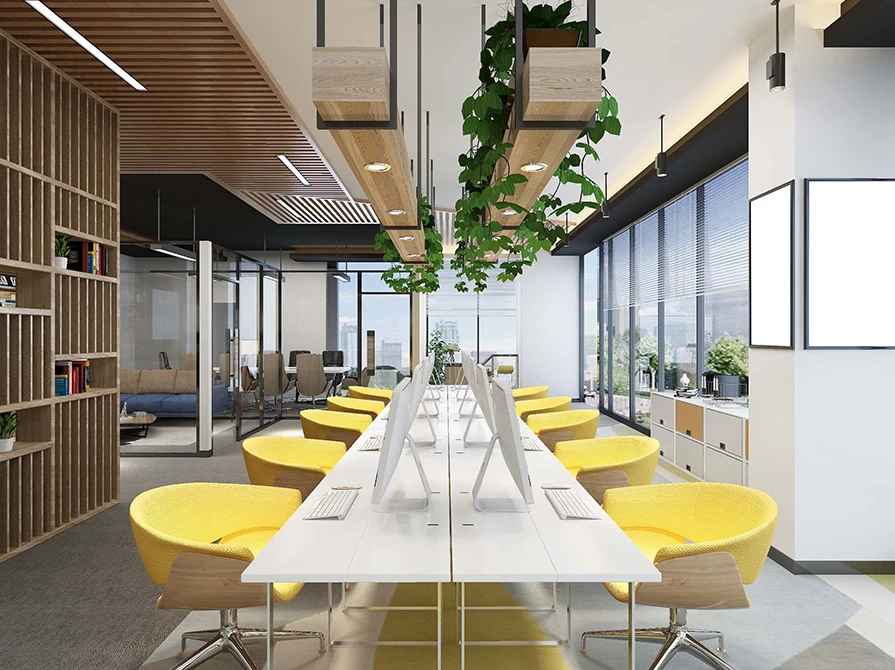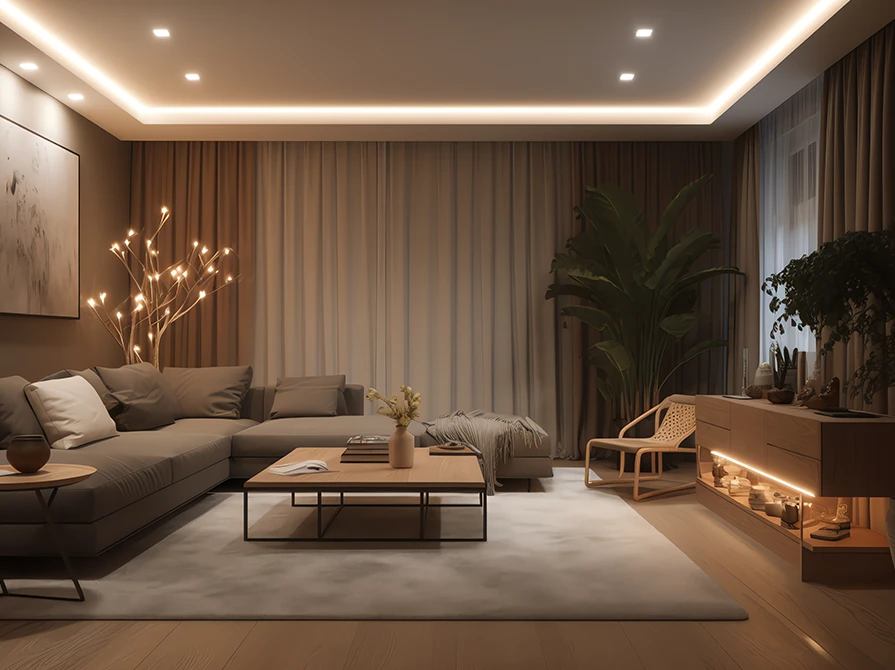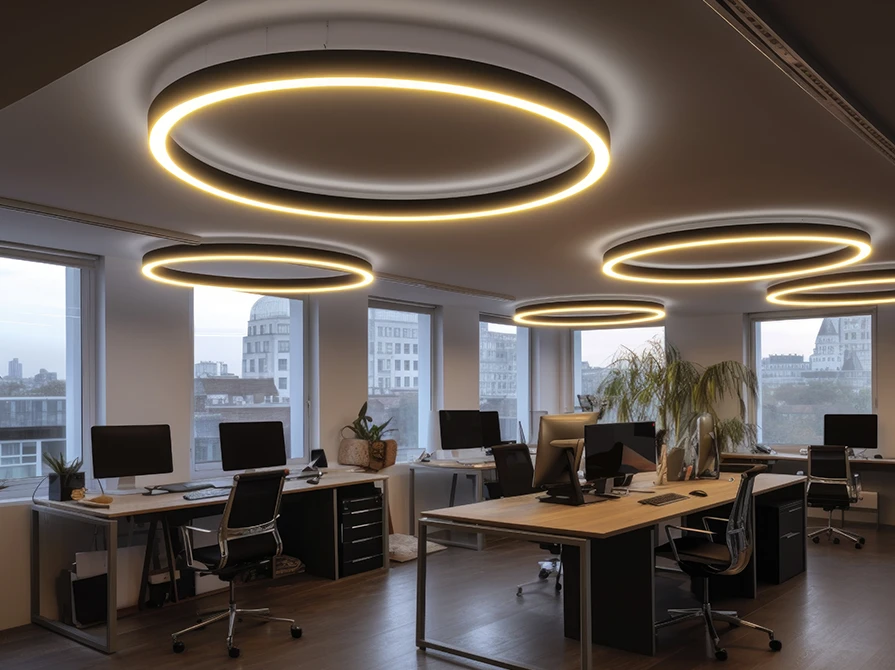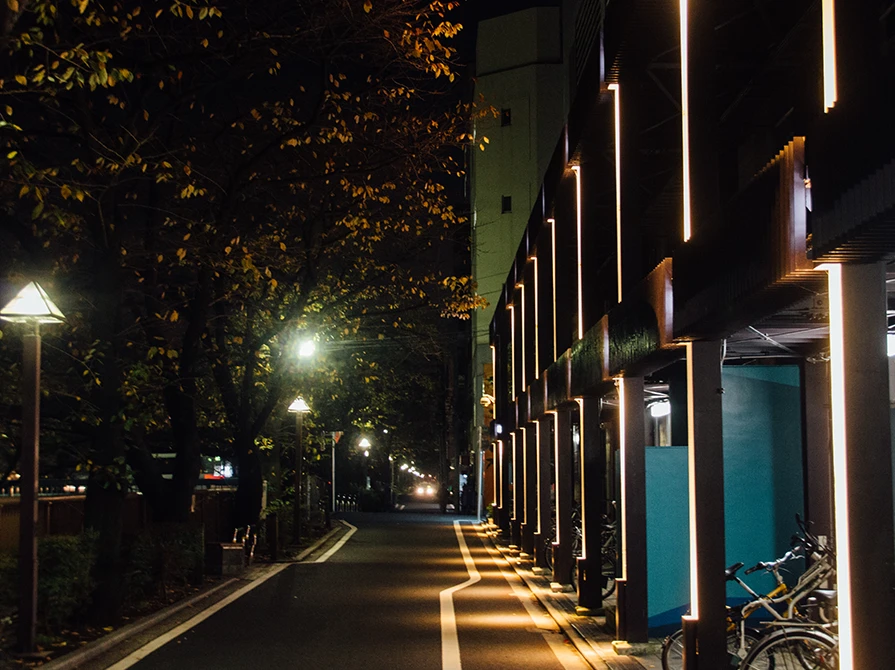


In the intricate tapestry of human experience, the role of lighting extends beyond mere visibility—it becomes a silent orchestrator, influencing emotions, performance, and overall well-being. Understanding the psychology of lighting reveals a realm where the interplay of light and shadow shapes the intricacies of human behavior. This blog delves into the profound impact of lighting on the human psyche, exploring how different lighting scenarios can evoke emotions, enhance productivity, and create environments that resonate with the essence of human nature.
Light possesses a transformative power, capable of setting the emotional stage in any environment. Warm, soft lighting tends to evoke feelings of comfort and relaxation, creating cozy and inviting atmospheres. In contrast, cool and bright lighting can instill a sense of alertness and focus, making it suitable for workspaces and areas where heightened concentration is essential. Understanding how different color temperatures influence mood allows for the intentional design of spaces that cater to specific emotional states.
Beyond mere illumination, the color spectrum plays a pivotal role in shaping emotional responses. Chromotherapy, or color therapy, is an age-old practice that recognizes the psychological impact of colors on human emotions. For instance, blue hues are often associated with calmness and serenity, making them suitable for bedrooms or relaxation spaces. On the other hand, vibrant reds can stimulate energy and passion, making them ideal for areas that encourage social interaction or creativity.
The lighting conditions in workspaces exert a profound influence on productivity and overall performance. Natural light, with its dynamic intensity and color temperature, has been linked to improved mood and enhanced cognitive function. Integrating daylight into office designs not only reduces the reliance on artificial lighting but also contributes to a healthier and more energized work environment. Additionally, task lighting tailored to specific activities minimizes eye strain and fatigue, fostering a conducive atmosphere for sustained focus and efficiency.
Lighting has a direct impact on circadian rhythms, the natural cycles that regulate sleep-wake patterns. Exposure to bright, natural light during the day helps synchronize circadian rhythms, promoting alertness and a sense of well-being. In the evening, warmer, dimmer lighting signals the body to prepare for rest, supporting the natural transition into a restful sleep. Designing lighting systems that align with circadian rhythms is crucial for creating environments that promote healthy sleep patterns and overall wellness.
The interplay of light and shadow contributes significantly to spatial perception. Well-designed lighting can enhance the perceived size and layout of a space, influencing how individuals navigate and interact within it. Strategic lighting highlights architectural features, creating focal points that guide the observer's gaze and contribute to a sense of cohesion and purpose within a space. Properly illuminated spaces are not only visually appealing but also contribute to a more comfortable and inviting atmosphere.
Dynamic lighting solutions provide the flexibility to adapt spatial configurations according to changing needs. Adjustable fixtures, such as track lighting or smart lighting systems, allow for the modification of lighting angles, intensity, and color. This adaptability is particularly valuable in multi-functional spaces where the lighting requirements may vary based on different activities or events. The ability to transform the ambiance of space through lighting adds an extra layer of versatility to spatial design, ensuring that environments can evolve to meet diverse user needs.
Light serves as a guide, directing individuals through physical spaces. Effective wayfinding is not solely about visibility; it involves creating a visual hierarchy through lighting. Pathways, signage, and points of interest can be accentuated through thoughtful illumination, ensuring that individuals can navigate spaces with ease and confidence. The psychology of wayfinding lighting lies in creating an intuitive and stress-free journey, enhancing the overall user experience within a built environment.
Experiential lighting extends beyond the visual realm, engaging multiple senses to create immersive environments. Incorporating elements such as ambient sounds, aromas, and tactile experiences alongside carefully curated lighting enhances the overall sensory journey. In retail spaces, for example, the interplay of lighting, music, and scents can influence shopper behavior, creating a memorable and emotionally resonant experience. Understanding the synergy between light and other sensory stimuli allows designers to craft environments that captivate and engage on a holistic level.
Advancements in technology have given rise to interactive lighting installations that respond to human movement, touch, or even sound. These installations blur the boundaries between art and the observer, inviting active participation and engagement. Whether it's a public art installation in a city square or an interactive exhibit in a museum, these dynamic lighting experiences create memorable encounters that transcend traditional notions of static illumination. The convergence of technology and artistry opens up new possibilities for creating immersive and participatory environments.
In social spaces, lighting systems become a choreographer of human interactions. Soft, warm lighting fosters a sense of intimacy and encourages personal conversations. On the contrary, brighter lighting in communal areas can create an energetic atmosphere, promoting group activities and social engagement. Understanding the social dynamics of lighting allows designers to craft environments that cater to diverse social interactions, from intimate meetings to lively gatherings.
Nowhere is the psychology of lighting more evident than in hospitality settings. Restaurants, hotels, and entertainment venues leverage lighting to create specific moods and enhance the overall guest experience. The color temperature, intensity, and placement of light sources contribute to the ambiance, influencing how guests feel within a space. From romantic dinners bathed in warm hues to vibrant social spaces illuminated with energetic lighting, the artful use of lighting in hospitality design becomes a tool for crafting memorable and emotionally resonant experiences.
The integration of biophilic design principles into lighting strategies involves incorporating elements inspired by nature. Natural light patterns, such as daylight simulation, contribute to a healthier and more engaging environment. The presence of greenery and views of nature, when coupled with appropriate lighting, can positively impact mood and well-being. Biophilic lighting design seeks to create connections with the natural world, fostering a sense of tranquility and connection with the environment.
In the symphony of human experience, lighting emerges as a conductor, shaping the emotional notes and orchestrating the behavioral rhythms. From the soothing embrace of warm tones to the invigorating energy of cool lighting, every illumination choice influences the human psyche. As we unravel the psychology of lighting, we gain the ability to design environments that not only meet functional needs but also resonate with the innate essence of human nature. Harnessing the power of light becomes a transformative journey—a journey where the interplay of illumination and shadows crafts spaces that nurture emotions. This symphony of light is a perpetual source of inspiration, allowing us to sculpt environments that resonate deeply with the human spirit. To know more about the capabilities and offerings of Wipro Lighting Solutions, feel free to get in touch with us.







